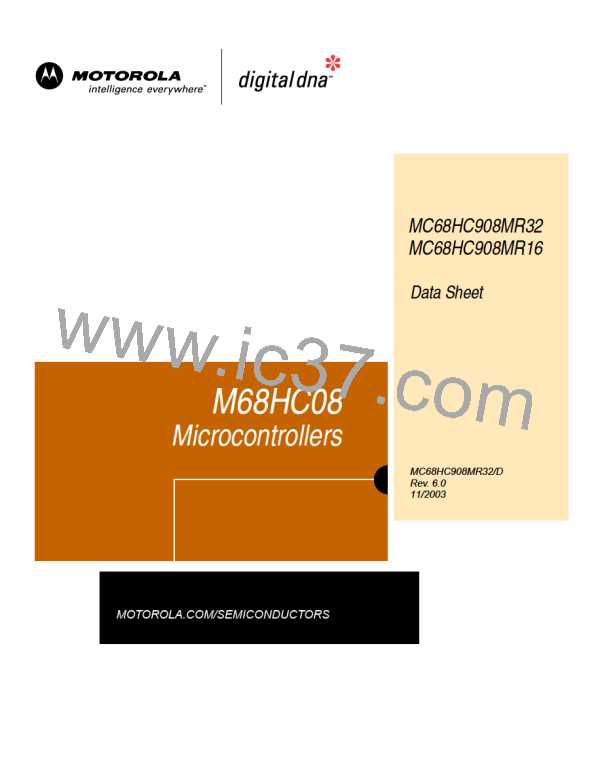Data Sheet — MC68HC908MR32 • MC68HC908MR16
Section 4. Clock Generator Module (CGM)
4.1 Introduction
This section describes the clock generator module (CGM, version A). The CGM
generates the crystal clock signal, CGMXCLK, which operates at the frequency of
the crystal. The CGM also generates the base clock signal, CGMOUT, from which
the system integration module (SIM) derives the system clocks.
CGMOUT is based on either the crystal clock divided by two or the phase-locked
loop (PLL) clock, CGMVCLK, divided by two. The PLL is a frequency generator
designed for use with crystals or ceramic resonators. The PLL can generate an
8-MHz bus frequency without using a 32-MHz external clock.
4.2 Features
Features of the CGM include:
•
•
PLL with output frequency in integer multiples of the crystal reference
Programmable hardware voltage-controlled oscillator (VCO) for low-jitter
operation
•
•
•
Automatic bandwidth control mode for low-jitter operation
Automatic frequency lock detector
Central processor unit (CPU) interrupt on entry or exit from locked condition
4.3 Functional Description
The CGM consists of three major submodules:
1. Crystal oscillator circuit — The crystal oscillator circuit generates the
constant crystal frequency clock, CGMXCLK.
2. Phase-locked loop (PLL) — The PLL generates the programmable VCO
frequency clock, CGMVCLK.
3. Base clock selector circuit — This software-controlled circuit selects either
CGMXCLK divided by two or the VCO clock, CGMVCLK, divided by two as
the base clock, CGMOUT. The SIM derives the system clocks from
CGMOUT.
Figure 4-1 shows the structure of the CGM.
MC68HC908MR32 • MC68HC908MR16 — Rev. 6.0
MOTOROLA Clock Generator Module (CGM)
Data Sheet
59

 FREESCALE [ Freescale ]
FREESCALE [ Freescale ]